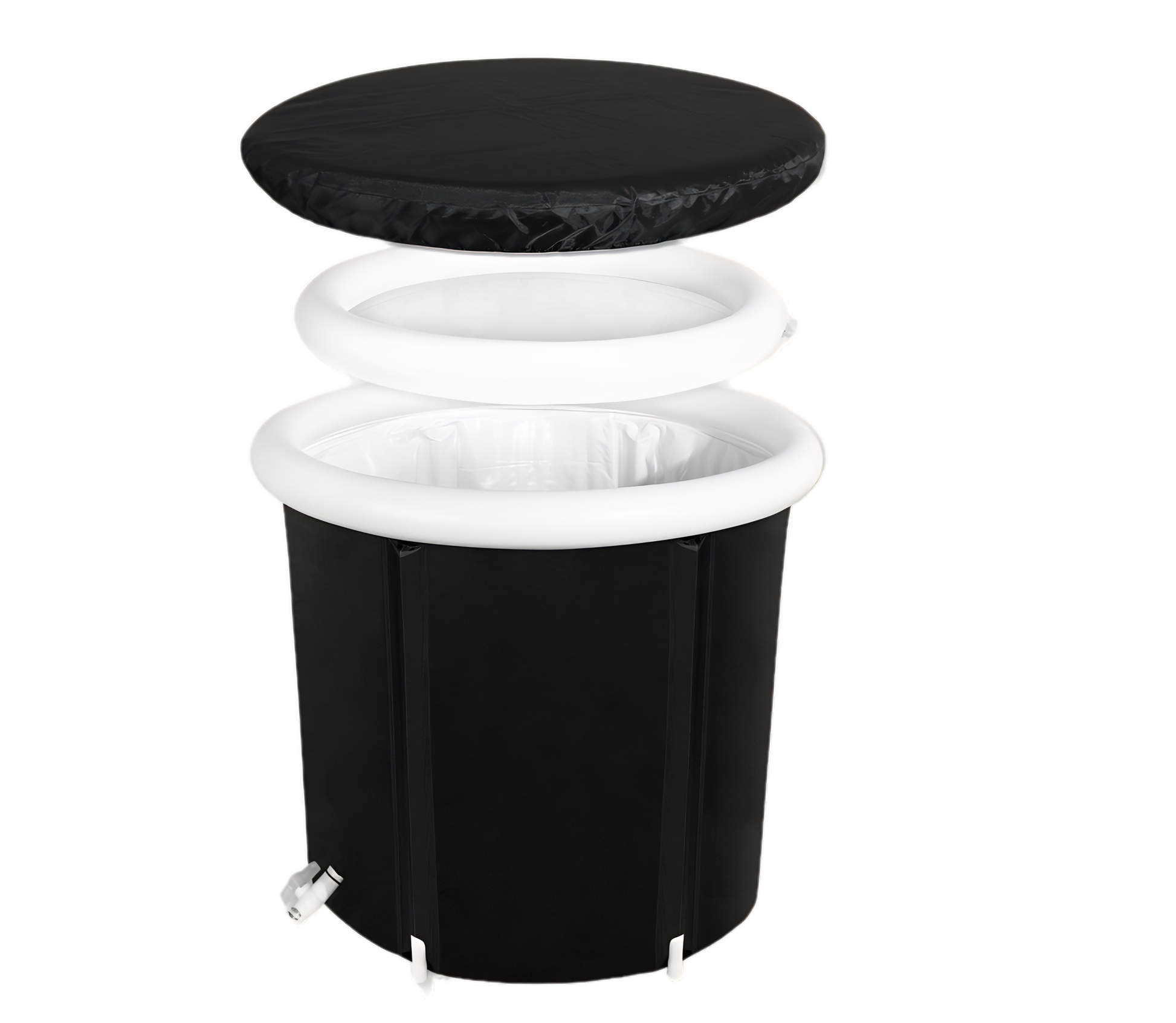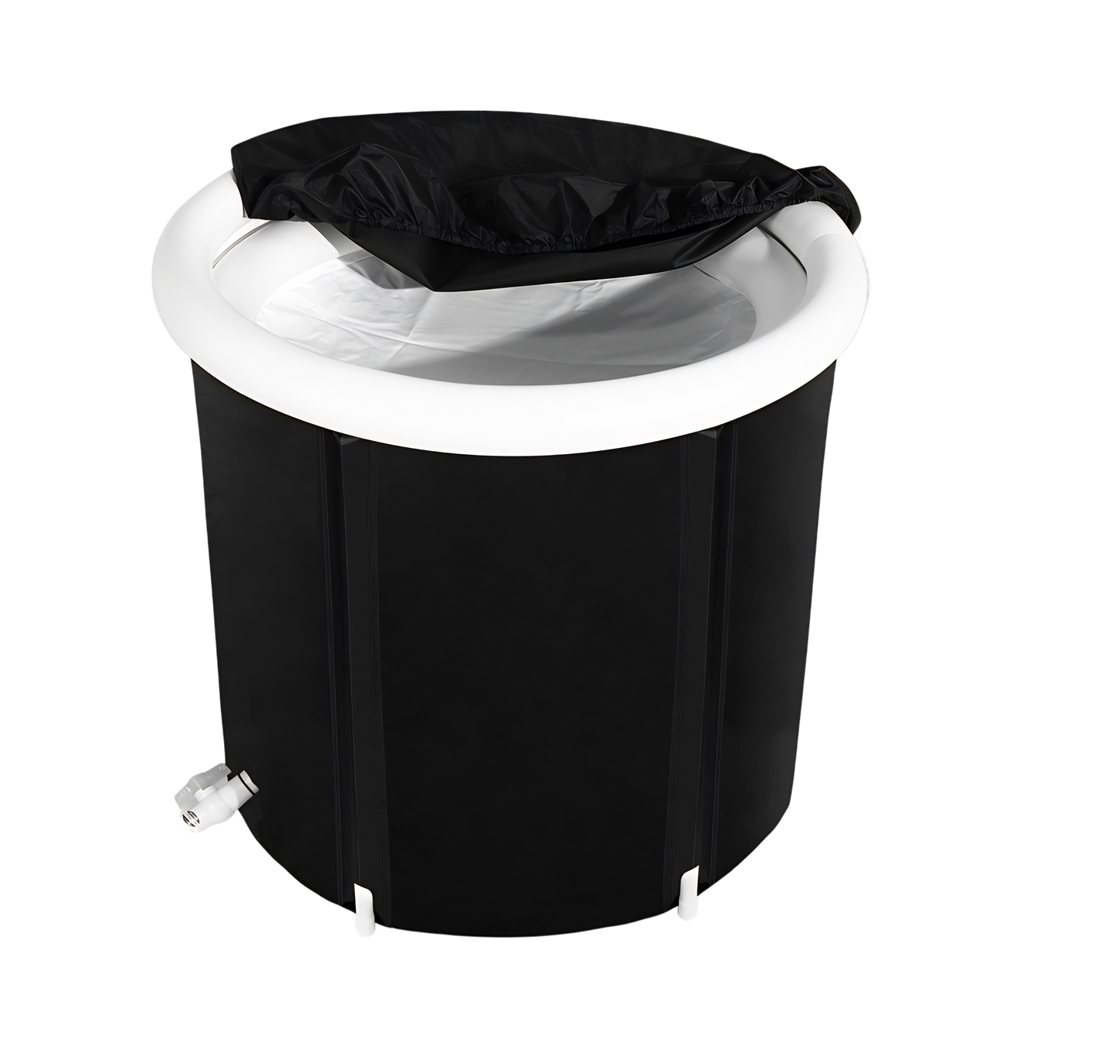For centuries, humans have used cold temperatures for therapeutic, health, and sporting recovery purposes. This practice, known as cryotherapy, includes the use of ice, cold water, and cold air to reduce heat, lower core and tissue temperatures, and improve blood flow. These cryotherapies have been found to provide benefits such as reduced pain perception, improved well-being, and post-exercise recovery. Historical records show that the use of cryotherapy dates back to ancient Greece, with notable figures like Hippocrates advocating for the therapeutic use of ice and cold water. Over time, the practice of cryotherapy has evolved, but the underlying principles and benefits have remained largely unchanged. Recent studies have confirmed the efficacy of ice bath therapy in muscle recovery, reduction of inflammation, and enhancement of overall health and well-being.
Key Takeaways:
- Historical ice bath practices have been used for centuries for therapeutic purposes.
- Cryotherapy, which includes ice baths, helps reduce pain perception and improve well-being.
- Ancient figures like Hippocrates advocated for the therapeutic use of ice and cold water.
- Ice bath therapy is effective in muscle recovery, reducing inflammation, and enhancing overall health.
- Studies support the benefits of ice bath therapy in promoting physical and mental well-being.
The Science Behind Ice Baths

Ice baths, also known as cold therapy or cold water immersion, have been used for centuries to promote physical and mental well-being. The benefits of ice baths lie in their ability to create a "positive stressor" on the body, triggering important physiological responses that promote adaptation and healing.
When you immerse your body in cold water during an ice bath, your blood vessels constrict, reducing inflammation and promoting blood flow to vital organs. This vasoconstriction helps to alleviate muscle soreness and accelerate recovery. Additionally, the exposure to cold water stimulates the release of stress hormones and endorphins, which contribute to the analgesic effects and mood enhancement often experienced during and after ice baths.
Research studies have consistently shown that ice baths offer numerous benefits. In addition to aiding in muscle recovery and reducing inflammation, ice baths can also help to reduce stress levels, boost mood and energy, and improve sleep quality. These benefits make ice baths a valuable tool for athletes looking to enhance their performance and individuals seeking post-exercise recovery or overall well-being.
The Science Behind Ice Baths
According to scientific research, ice baths have been found to have a variety of health benefits. Cold therapy is known to reduce inflammation, increase blood flow, and improve healing and recovery processes (Espeland et al., 2022). When exposed to cold water, the body's blood vessels constrict, which helps to reduce inflammation and swelling. This vasoconstriction redirects blood flow to vital organs, promoting their overall health and function.
In addition to physical benefits, ice baths also have a positive impact on mental well-being. The release of stress hormones and endorphins during cold exposure can help reduce stress levels, improve mood, and enhance overall feelings of well-being.
Ice baths are particularly beneficial for muscle recovery. The cold water helps to alleviate muscle soreness and reduce inflammation, making it an effective tool for athletes recovering from intense training sessions or competitions. By promoting blood flow and reducing inflammation, ice baths can accelerate the healing process, allowing athletes to bounce back faster and perform at their best.
| Benefits of Ice Baths | Summary |
|---|---|
| Reduced inflammation | Ice baths constrict blood vessels, reducing inflammation and swelling in the body. |
| Improved muscle recovery | Ice baths alleviate muscle soreness and accelerate the healing process. |
| Enhanced mood and well-being | The release of stress hormones and endorphins during cold exposure improves mood and reduces stress levels. |
| Improved sleep quality | Ice baths have been shown to improve sleep quality and promote better rest and recovery. |
It is important to note that ice baths may not be suitable for everyone, especially individuals with certain medical conditions or sensitivities to cold. It is recommended to consult with a healthcare professional before incorporating ice baths into your wellness routine. However, for those who can safely engage in ice bath therapy, it offers a natural and effective way to promote physical recovery, mental resilience, and overall well-being.
The Andrew Huberman Ice Bath Protocol and the Benefits of Cold Exposure

At our core, humans have always sought ways to improve our well-being and enhance our resilience. One such method gaining popularity is the Andrew Huberman ice bath protocol, inspired by the renowned Wim Hof Method. This protocol harnesses the potential benefits of cold exposure, which has been shown to have a profound impact on our physical and mental health.
Cold exposure, achieved through ice baths, triggers a range of physiological responses in the body. Vasoconstriction, the narrowing of blood vessels, helps reduce inflammation and promotes efficient blood flow to vital organs. Additionally, cold exposure stimulates the release of stress hormones and mood-enhancing neurotransmitters, resulting in analgesic effects and an improved sense of well-being.
Research supports the efficacy of ice baths in facilitating muscle recovery, reducing soreness, and elevating mood. The Andrew Huberman protocol emphasizes starting with shorter exposure times and gradually increasing them, considering individual comfort levels and safety throughout the process. By incorporating this protocol into our wellness routine, we can reap the holistic benefits of physical recovery, mental resilience, and overall well-being that cold exposure provides.
While ice baths may not be suitable for everyone, they offer a valuable tool for those seeking a natural and effective approach to enhance their physical performance, mental clarity, and general health. By embracing the Andrew Huberman ice bath protocol and exploring the benefits of cold exposure, we can embark on a journey towards improved physical vitality and mental fortitude.
FAQ
What are the therapeutic benefits of historical ice bath practices?
Historical ice bath practices have been used for centuries for therapeutic, health, and sporting recovery purposes. They provide benefits such as reduced pain perception, improved well-being, and post-exercise recovery.
How do ice baths promote physical and mental adaptation?
Ice baths are considered a "positive stressor" for the body. When exposed to cold water, blood vessels constrict, reducing inflammation and promoting blood flow to vital organs. This leads to analgesic and mood-enhancing effects through the release of stress hormones and endorphins.
What are the benefits of ice baths?
Research studies have shown that ice baths can aid in muscle recovery, reduce stress levels, boost mood and energy, and improve sleep quality. They are valuable tools for athletes, individuals seeking post-exercise recovery, and those looking to enhance their overall well-being.
What is the Andrew Huberman Ice Bath Protocol and its benefits?
The Andrew Huberman ice bath protocol draws inspiration from the Wim Hof Method and focuses on harnessing the potential benefits of cold exposure. Cold exposure through ice baths triggers physiological responses in the body, reducing muscle soreness, accelerating recovery, and improving mood.
Can anyone take ice baths?
While ice baths may not be suitable for everyone, they offer a holistic approach to physical recovery, mental resilience, and overall well-being. It's important to prioritize safety and individual comfort levels when considering ice bath therapy.
Read More: Who Should Avoid Ice Baths.






